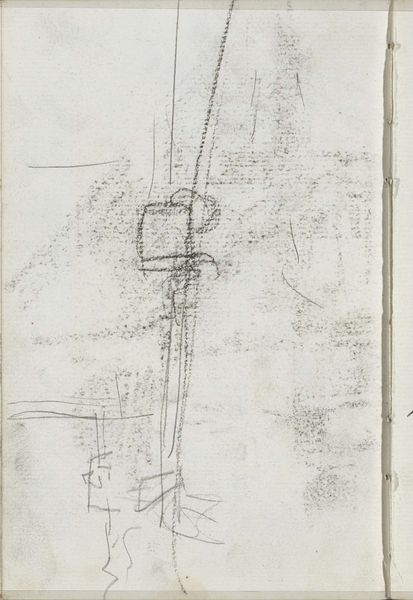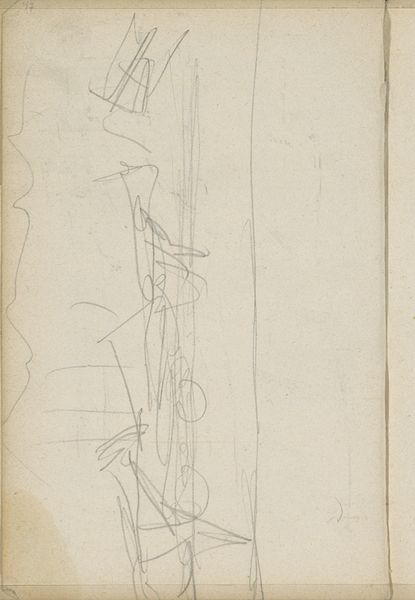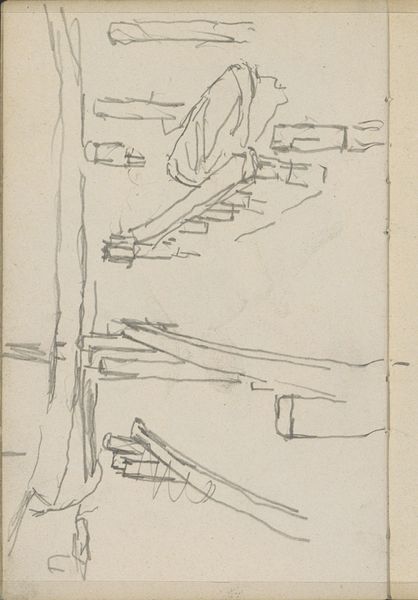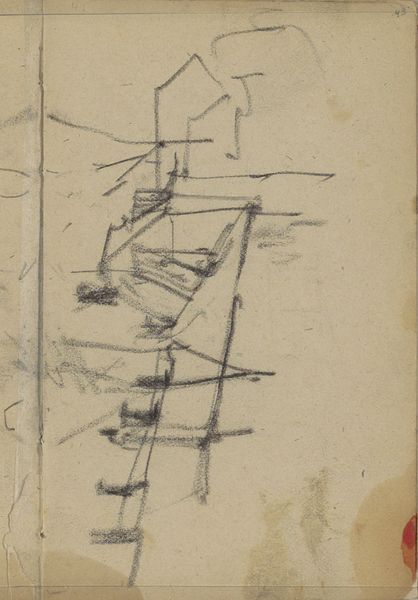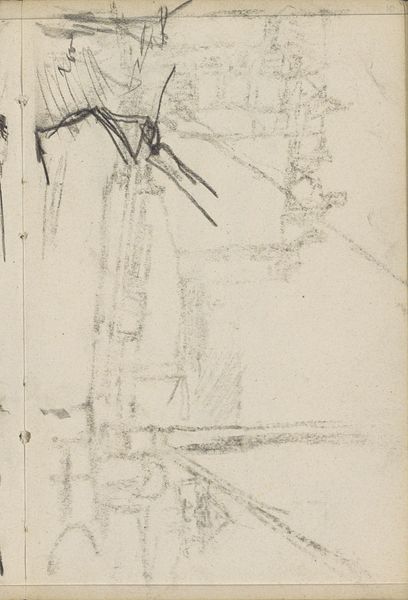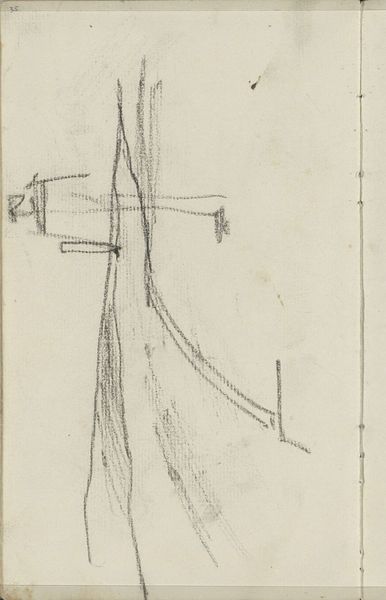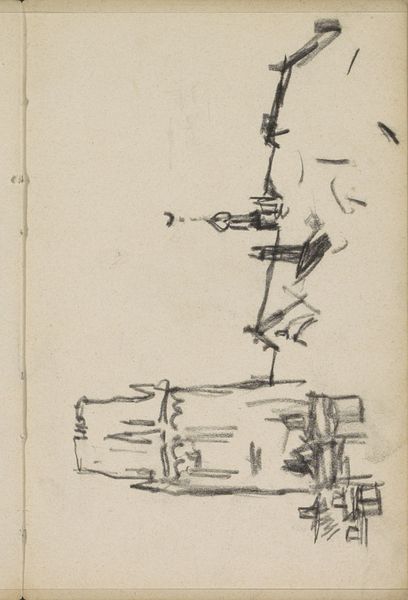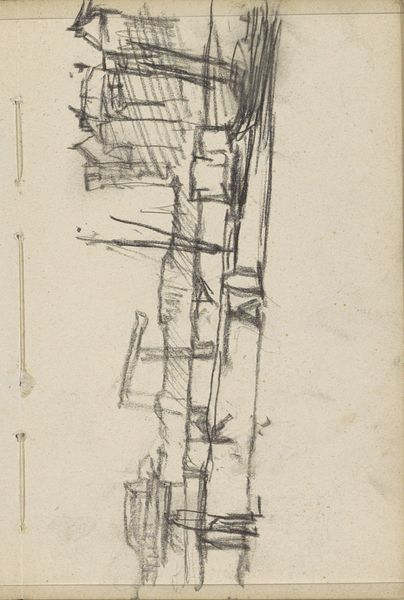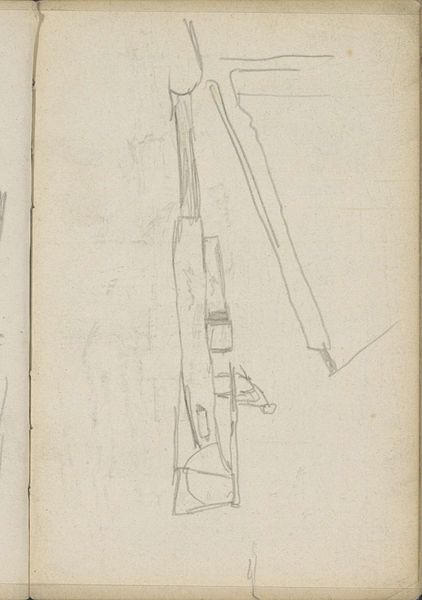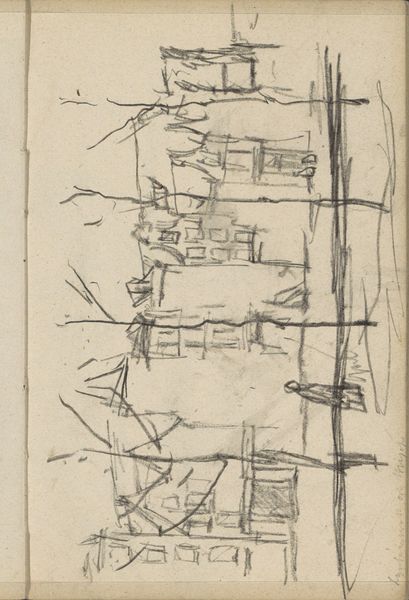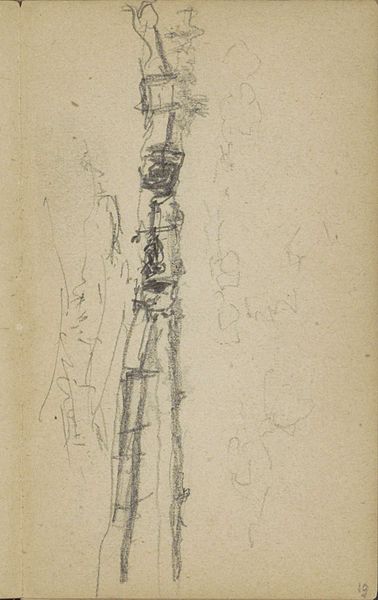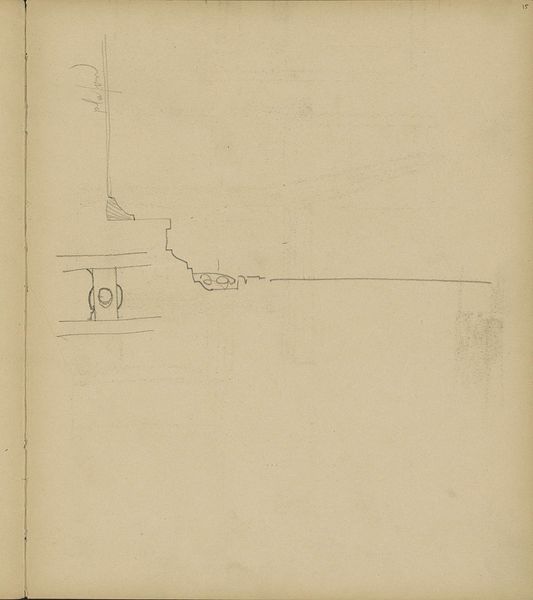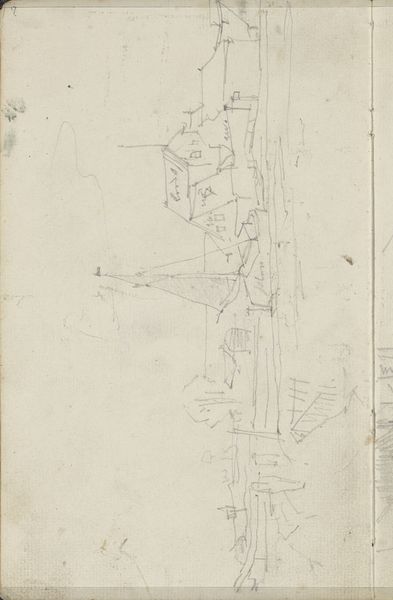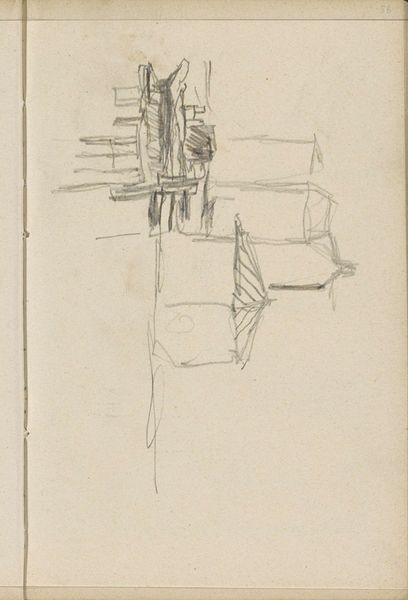
drawing, paper, pencil
#
drawing
#
landscape
#
paper
#
geometric
#
pencil
#
modernism
Copyright: Rijks Museum: Open Domain
Editor: This is *Gezicht op de Nieuwe Kerk te Amsterdam*, a pencil drawing on paper by George Hendrik Breitner, dated sometime between 1906 and 1923. It's strikingly minimal, almost abstract in its depiction of architectural elements. What story can we unpack from these lines? Curator: This drawing offers a compelling glimpse into Breitner’s working process. It's not just a picture of the New Church; it's an exploration of form and perspective. The sketch aesthetic speaks to the rapid industrialization and urbanization that were reshaping Amsterdam during Breitner's time. How does it resonate with you regarding the period? Editor: I suppose, seeing it as an industrial piece makes sense now! The quick strokes, the lack of detail...It has an "on-the-go" feeling, almost like urban documentation. But the church… it grounds it somehow. Curator: Exactly. The choice to depict the Nieuwe Kerk, traditionally associated with the monarchy and state ceremonies, amidst this flurry of modernization is potent. What do you think that contrast suggests about Breitner's perspective on Dutch society at the time? Perhaps a commentary on tradition adapting, or struggling, within a new reality? Editor: I see. Perhaps it's not just a drawing of a church, but a statement on the changing face of Amsterdam and its institutions. He is also cropping a lot to frame this piece to provide specific views on architecture or social setting. Thank you, this gave me a lot to think about! Curator: Indeed! And hopefully it encourages further thought on how artists engage with and reflect societal shifts, shaping public perceptions through their work. This has given me more nuance, too.
Comments
No comments
Be the first to comment and join the conversation on the ultimate creative platform.
